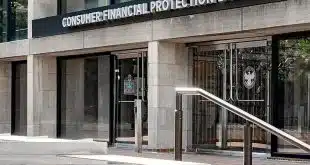The bank card networks will introduce new fees for merchant acquirers in April, according to information obtained by Digital Transactions News. The most significant fee is Visa Inc.’s new Fixed Acquirer Network Fee (FANF), a key component of a revamped pricing strategy the No. 1 payment card network announced last summer to defend its debit business in the face of new federal regulations that could move volume off of its networks and onto competing networks. MasterCard Inc., meanwhile, is adding two new network fees and is expected to introduce a new debit interchange rate in the controversial small-ticket sector.
The networks in recent weeks began divulging details about new pricing in bulletins to merchant-acquiring banks, which in turn are informing their independent sales organizations and other merchant processors. In contrast to interchange, which is collected by acquirers and paid to card issuers, Visa’s FANF and Acquirer Processing Fee (APF) are fees that Visa charges acquirers and books as its own revenue. Acquirers typically pass such fees and interchange on to their merchant clients.
A Visa spokesperson tells Digital Transactions News by e-mail that, “our fee structure is designed in a way to lower the cost of Visa acceptance … these changes will result in a reduction in Visa’s acquiring fees in the aggregate.”
The FANF is a complicated affair that has some big numbers. Here is how it will work, according to information from processors and a new report about network pricing from New York-based securities firm Keefe, Bruyette & Woods:
For card-present merchants, excluding fast-food restaurants, the monthly, per-location FANF for merchants with one to three locations will be $2 and go up to $65 for merchants with more than 4,000 locations. High-volume, card-present merchants with one to three locations will pay $2.90 per location monthly and possibly more than $85 per location for merchants with more than 4,000 locations. Details about the volume tiers were unavailable.
For card-not-present merchants, merchant aggregators, and fast-food restaurants, the monthly fee will be assessed based on Visa volume and range from $2 for sales of $50 or less up to $40,000 for merchants with more than $400 million in gross sales. The fee table in this category reportedly has at least 16 tiers. A merchant with just over $5 million a month in Visa volume would pay $1,500 per month, according to Joe Garza, senior vice president of North American Alliances at Toronto-based merchant acquirer Moneris Solutions’ U.S. headquarters in Schaumburg, Ill. He expects a very large aggregator such as PayPal Inc. would pay $40,000 per month.
The fee takes effect April 1, though Visa won’t actually start collecting it from acquirers until July 1. A reduction in some variable costs, another part of the plan announced last July, also is set to take effect in April. That is the APF, which will go down 21%, from 1.95 cents per debit authorization to 1.55 cents.
Visa, which would not comment beyond its prepared statement, did not say why it lumped fast-food restaurants in with card-not-present merchants. But one commonality is a large number of small transactions. Both Visa and MasterCard set small-ticket debit interchange at the maximum allowed under new Durbin Amendment debit interchange price controls that took effect Oct. 1, which had the effect of raising the cost of card acceptance on very small transactions. That caused at least one specialist in small-ticket payment processing, USA Technologies Inc., to refuse to accept MasterCard’s debit cards on its vending machine network. USA Technologies struck a deal with Visa to keep interchange at pre-Durbin levels for a time.
Garza expects that because of the APF price cut, high-volume, small-ticket merchants such as the Redbox DVD-rental service and Apple Inc.’s iTunes online store will enjoy lower costs. “I think that will net a positive gain for them,” he says.
Many other merchants, however, may not see any cost reductions, he says. Garza cautions that Moneris is still analyzing how the FANF and lowered APF will work in totality, but at first glace he’s not too optimistic. “I think it’s going to be another black eye for the merchant,” he says. “It’s going to be protested, we’re going to hear from the NRF.” That’s a reference to the National Retail Federation, a leader in the merchant effort to reduce card-acceptance costs.
KBW’s report seems to agree with that view while concluding that higher revenues will be good for Visa’s investors. “After analyzing the net impact of the change, on the surface, it would seem to indicate that this is a net positive revenue impact for Visa as the fixed economics earned seem to trump any incremental savings the merchant would garner through the reduction of the variable fees,” it says. The report, adds, however, that there’s another major factor that could affect acceptance costs, that being Visa’s incentives to merchants to spur Visa transaction volume. Chief executive Joseph Saunders this month said the network is spending more lavishly on incentives for both merchants and card issuers, which grew last quarter by 19%.
The Visa spokesperson says the changes are the result of “debit regulation, which has altered the competitive landscape.” That’s led to a new, three-part strategy of lower variable pricing, incentives, and the FANF that he says will enable Visa to lower acceptance costs “to the vast majority of U.S. merchants” while still enabling Visa to invest in its network.
“Collectively, these changes are designed in a way that is intended to reduce the cost of Visa acceptance. Ultimately these changes should provide merchants and acquirers with financial incentive to route transactions to Visa. The more transactions they route, the lower the cost per transaction.”
MasterCard, meanwhile, is expected to announce new small-ticket debit interchange, according to ISO sources, but a company spokesperson refused to give details about upcoming price changes. The two new network fees in the offing are an annual acquirer licensing fee and an annual fee known as the “Type II Third Party Processor Registration Fee” that MasterCard will collect beginning in July. Both fees will be volume based, but MasterCard will exclude PIN-debit volume in calculating it, an apparent effort to boost its PIN-debit service at the expense of Visa’s much-larger Interlink PIN-debit brand.





